Secluded garden offers unique escape for weary urbanites
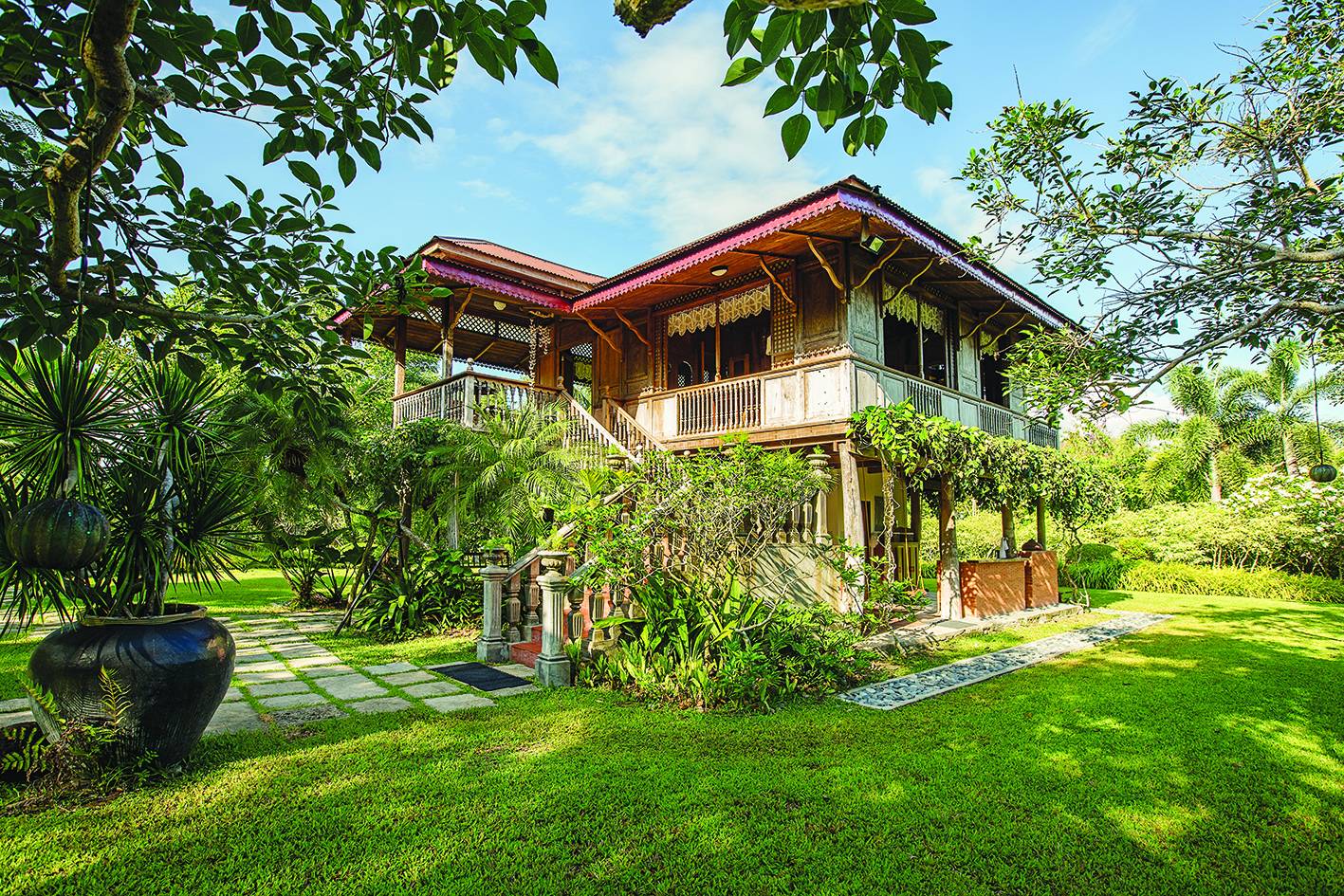
El Jardin de Zaida, or EJDZ to its intimates, is a unique escape for weary city dwellers. Unlike the beachfront resorts that Laiya in San Juan, Batangas, is known for, this 11-hectare garden sanctuary is nestled in the tranquil barangay of Abung. Its seclusion allows guests to fully immerse themselves in nature, a welcome respite from Manila’s daily bustle.
The secret to EJDZ’s charm lies in landscape consultant Mike Asinas’ artful use of commonplace, low-maintenance endemic plants. A decade ago, the family matriarch, Zaida M. Mago, entrusted him with transforming the outdoor space surrounding the property’s first structure, the Bahay Kubo.
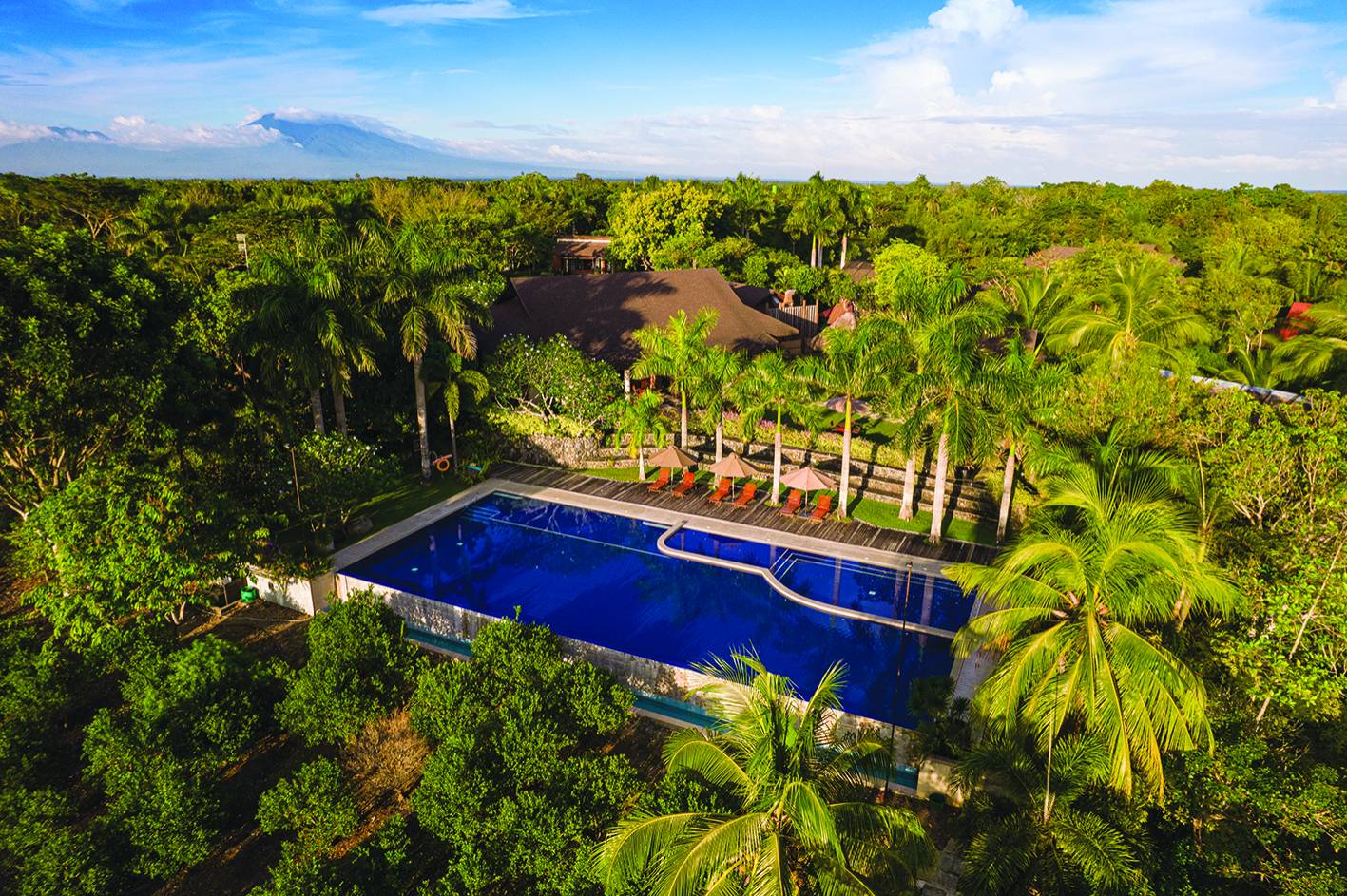
A horticulturist, Asinas meticulously plans the landscape. He creates a detailed list of plants, considering their quantities, suitability for the specific microclimates within the garden and their overall texture.
He compares his approach to understanding people’s personalities: “Some plants thrive in the shade, while others prefer sunshine. Some require constant watering, while others can tolerate drier conditions. Just like people, they need to harmonize with each other when planted together.”
Asinas points to EJDZ as a testament to the power of proper maintenance. He began with a foundation of small trees, shrubs and the readily available fertile soil. Not only has it allowed the plants and trees to flourish, but it has also significantly increased the property’s value.
Changing levels
In 2018, the Mago family transformed their private haven into a full-fledged garden resort and events space. While the overall style leans toward a tropical paradise brimming with foliage and dense plantings, Asinas incorporated a unique contrast. He juxtaposed the broad-leafed clusters with manicured topiaries sculpted from small-leafed plants such as the kamuning, tsaang gubat, Fukien tea and eugenias.
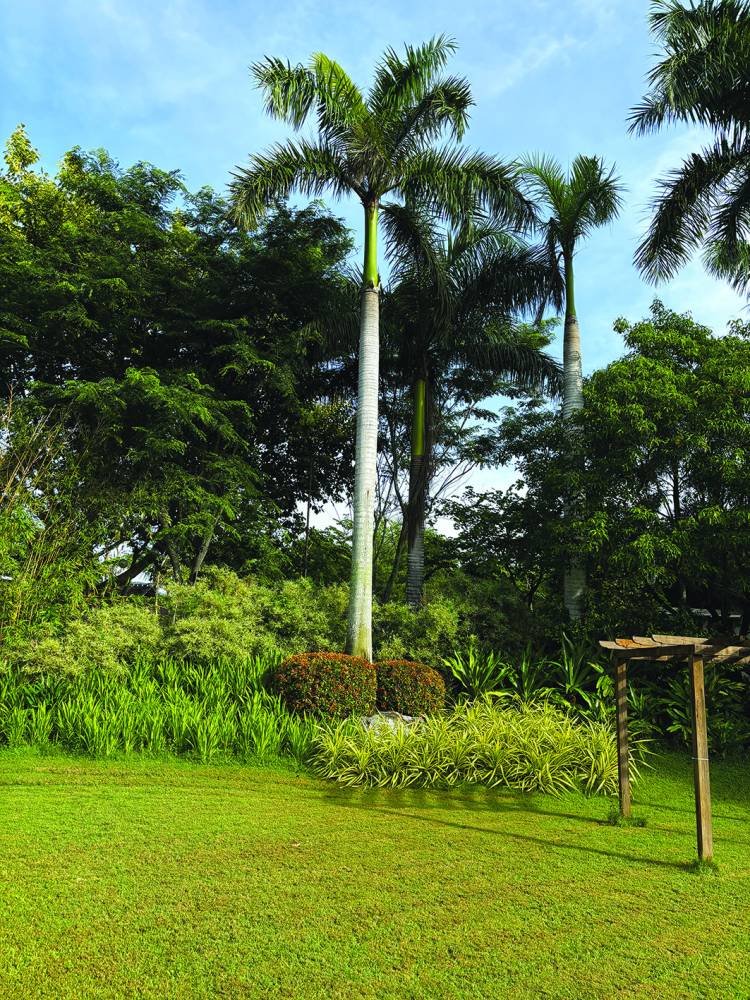
In deference to the owners’ desire for a touch of sophistication, Asinas incorporated elements that echoed the Japanese-inspired topiary garden he had designed with his mentor, Ponce Veridiano, for the Greenbelt mall.
To add visual interest to the initially flat terrain, Asinas played with elevation. This created distinct ambiences in various areas.
For instance, the driveway features a slightly raised bed showcasing buri palm trees surrounded by suameis and selloums, offering a welcoming first impression. Silver-toned accents from picarra plants, pandakaki, and white spider lilies provide a striking contrast to the verdant foliage. The landscape then gently slopes and curves toward the infinity pool.
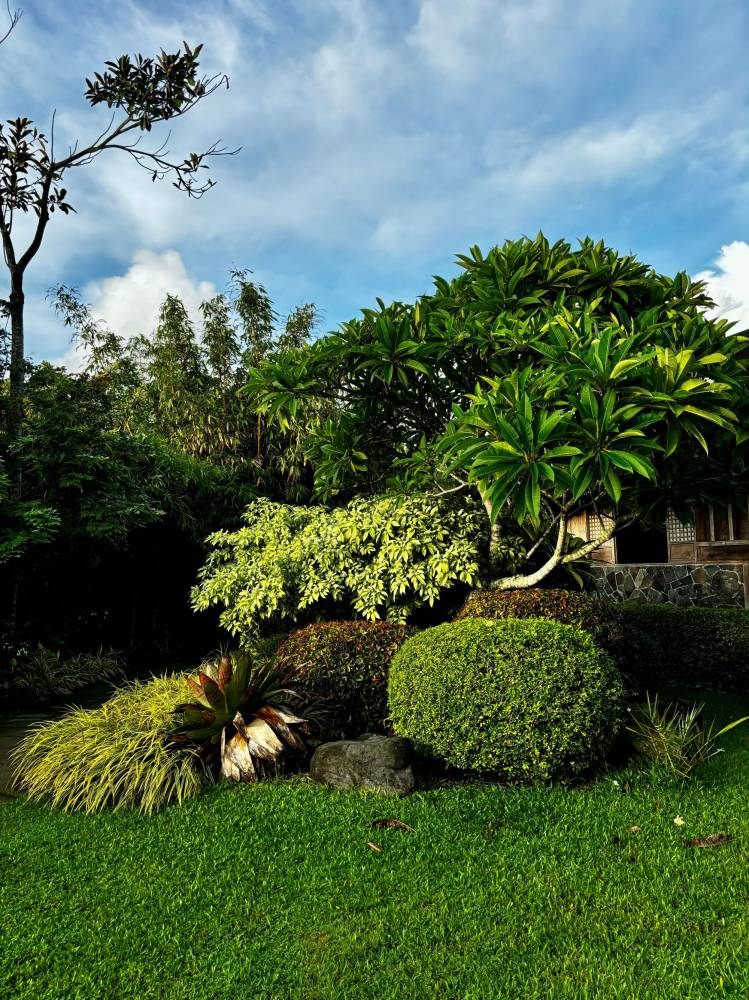
Asinas emphasizes the importance of plant groupings in achieving a cohesive look. “The Pinoy garden is about harmonious abundance,” he explains, “not a cluttered mess. Contrasting tones create visual depth. I enjoy playing with textures and leaf sizes. Imagine mixing the soft pink hues of the picarra with the bold, sculptural green leaves of the selloum, then adding pops of color from vibrant crotons and the rich purples of philodendrons.”
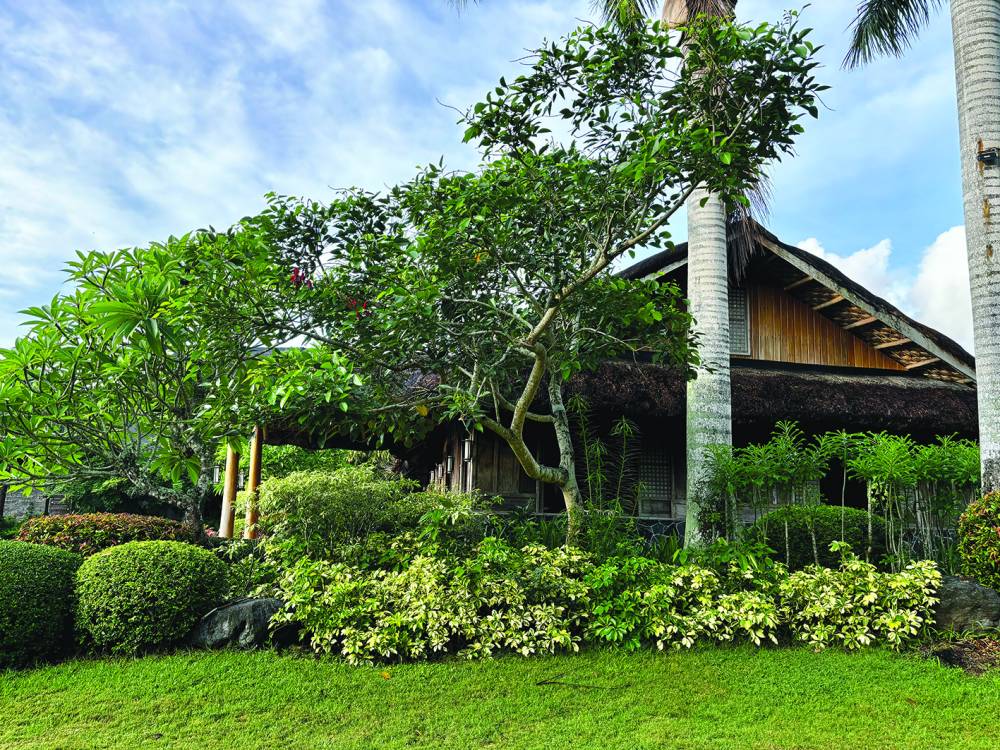
The spa area offers a unique experience. Sunken and sheltered, it features a charming Japanese garden. The centerpiece is a majestic African talisay tree, its tiered foliage and large, glossy leaves cascading down. Fine branches gracefully extend over contrasting ground cover plants, their image reflected in the koi pond.
Shaded sections use contrasting colors and textures. Large rhapis palms and sculpted Fukien tea trees frame the base of the talisay, while creeping junipers and bucidas lend elegance. White irises, with their stark beauty, play against the surrounding greens and neutrals.
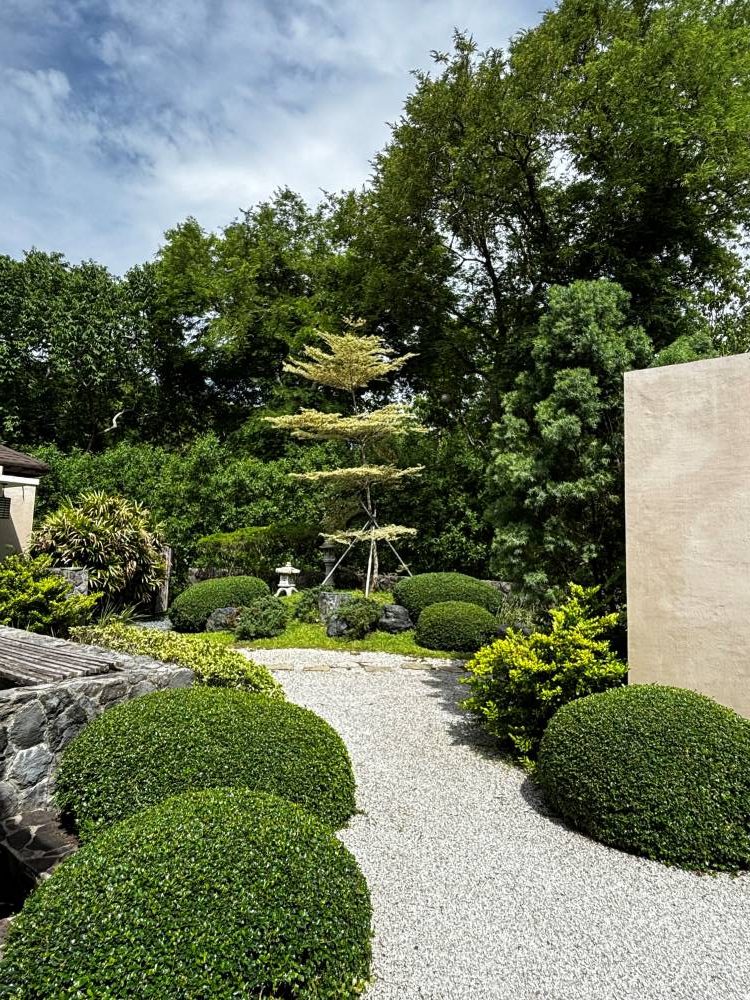
Beyond aesthetics, the white pebbles serve a dual purpose. Their serene Zen effect complements the garden’s overall ambiance, while their practical function helps absorb excess moisture and improve water drainage. Flat river stones add another earthy touch to the landscape.
Obscured by trees
The approach to the Casa Molave, a transplanted ancestral home, is shrouded in mystery. Gentle slopes leading toward the house are lined with flowering trees such as the mussaenda, Queen Sirikit, and bagawak, creating a veil of vibrant blooms. Asinas meticulously researched old colonial-era gardens, incorporating elements such as the palmeras, San Francisco shrubs, and the compact, evergreen Papua (known locally as kalipay). A lush trellis adorned with vibrant creepers adds another layer of visual interest.
Inside the Casa Molave, built with 90 percent genuine molave wood, the focus is on simplicity. Though furnished with a mix of antique and reproduction furniture, the showstopper is the canopied bed. This exquisite piece boasts a rare matching foot bench, both crafted by the renowned 19th-century bed maker Ah Tay.

The Mago family’s original Bahay Kubo, a traditional hut with a distinctive anahaw roof, has been transformed into a cozy events space. Unlike the typical venue, it retains the charm of a quintessential nipa hut, adorned with a variety of plants reminiscent of the famous folk song.
On the second floor of the conference hall, the bar opens to views of the ornamental gardens. Lush suamei and San Francisco plants create a verdant backdrop, contrasted by the white grass and the vibrant green of crawling philodendron gloriosums that line the perimeter. Asinas highlights the water jasmine (suamei), a favorite of Veridiano, known for its elegant twiggy branches and delicate white flowers.
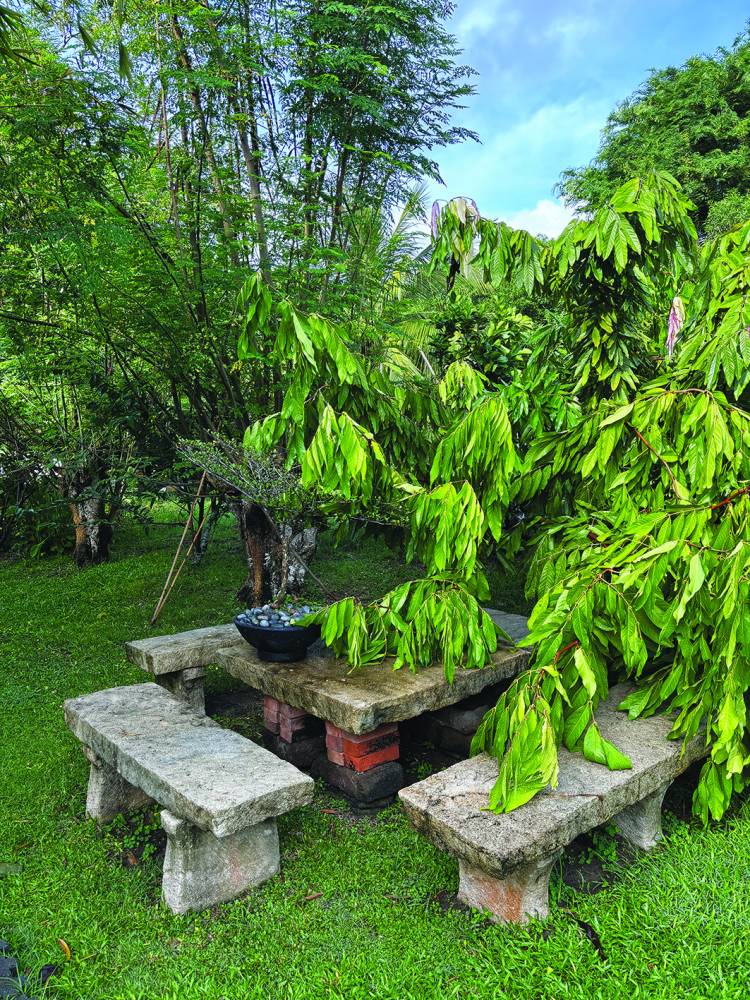
The landscape design has become a haven for privacy-seeking celebrities, companies hosting confidential meetings, top-secret weddings, and even romantic marriage proposals on the picturesque bridge overlooking the manmade lake.
To accommodate a growing clientele, the 12-room resort is expanding its capacity. It will add 32 rooms by 2025. Since December, El Jardin de Zaida has been under the professional management of Hospitality Innovators Inc., ensuring a seamless guest experience.
Because of its commitment to ecology, the EJDZ likewise hosted the press during the launch of the book “Barako 77: The Story of Environmental Activism in San Juan, Batangas.” This choice reflects the resort’s dedication to not just showcasing the beauty of nature, but also its role in inspiring environmental consciousness.

















